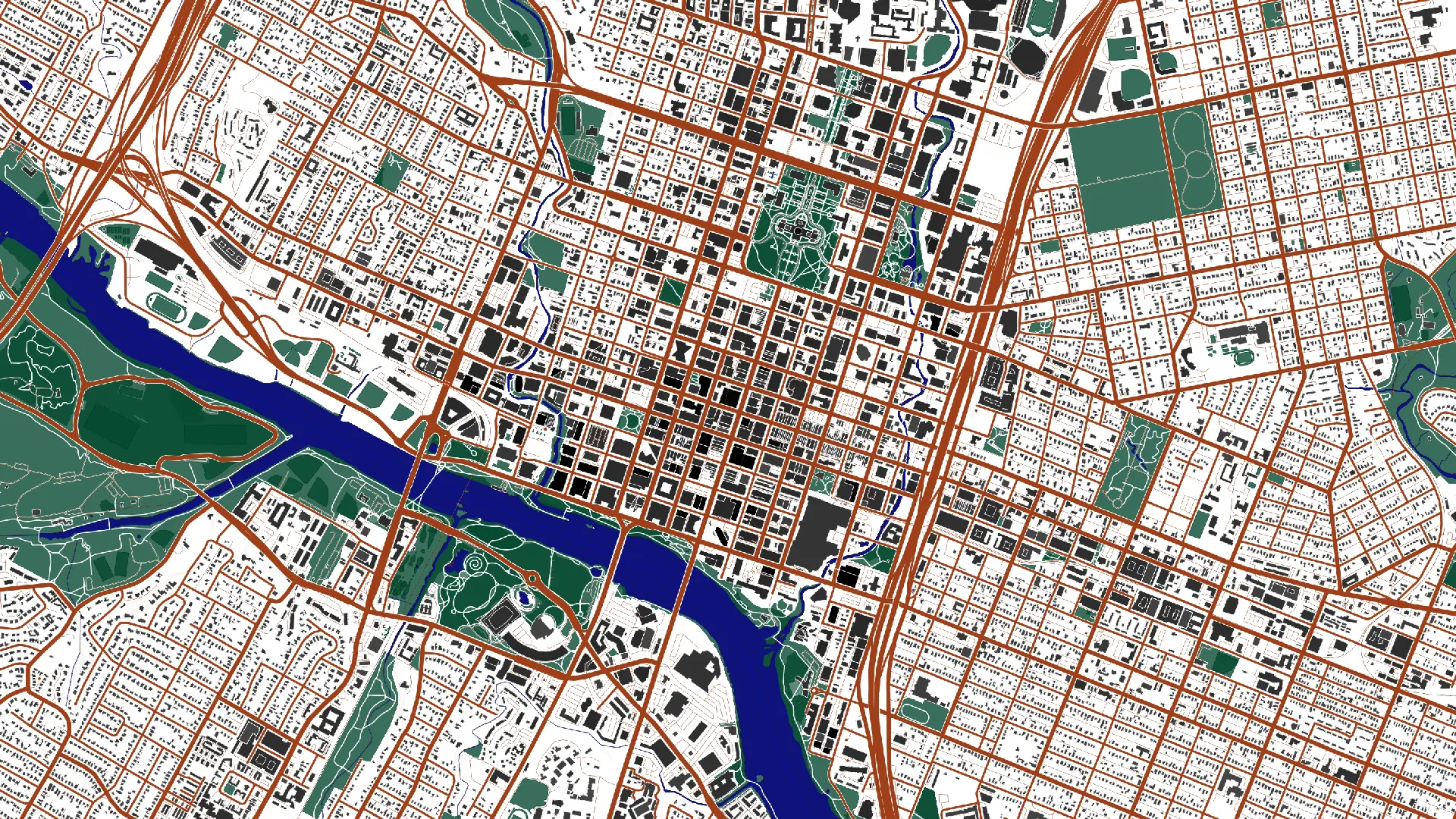Shifting Horizons: The Changing Landscape of Internal Migration in the United States
In an era defined by rapid transformations and shifting patterns, internal migration in the United States is a dynamic phenomenon that reflects the ever-evolving nature of our society. From the crowded streets of New York to the quiet neighborhoods of Boise, the movement of people within the country has profound implications for our economy, culture, and politics. In this article, we will explore the multifaceted aspects of internal migration, discussing its impact, challenges, and potential. We’ll delve into the practices of cities that have successfully managed this ongoing shift and analyze the complex web of factors that shape internal migration. Join us as we navigate this intricate journey through the changing landscape of internal migration in the United States.

A Nation on the Move
The United States, often hailed as the land of opportunities and diversity, is a nation on the move. The internal migration of people within the country has been an integral part of its history and identity. While the motivations behind such movements vary, they are a reflection of a dynamic society adapting to changing circumstances. Whether it’s the pursuit of better job prospects, education, lifestyle, or simply the quest for a new adventure, the reasons behind internal migration are as diverse as the people themselves. This constant movement shapes the social and economic landscape, and in this article, we aim to explore its changing contours.
The Dynamics of Internal Migration
Internal migration, also known as domestic or intranational migration, involves the movement of people within the borders of a single country. In the context of the United States, this typically means people relocating from one state to another or within a state. While external immigration often garners more attention, the significance of internal migration cannot be understated. This phenomenon influences the distribution of population, resources, and political power. It shapes the fabric of our cities and towns, leading to urbanization and suburban sprawl, and affects economic opportunities and labor markets. Understanding the dynamics of internal migration is crucial for policymakers, urban planners, and anyone interested in the future of the nation.
Unpacking the Challenges
While internal migration brings forth many opportunities, it also poses significant challenges. It can create disparities in terms of access to education, healthcare, and employment. Rural areas often experience a drain of talent and resources as individuals flock to urban centers. Conversely, some cities grapple with overcrowding and inadequate infrastructure. The impact of these challenges is far-reaching and necessitates a thoughtful and strategic response. In this article, we will dissect these challenges, highlighting the need for effective governance and policy measures.
The American Patchwork: A City in Focus
In the vast tapestry of internal migration across the United States, one city that stands out as a beacon of successful practices is Austin, Texas. Known for its vibrant culture, tech scene, and robust economy, Austin has become a magnet for newcomers from across the country. Its rapid growth and ability to accommodate new residents while maintaining its unique character offer valuable lessons in managing internal migration effectively.
Austin’s Success Story
Tech Hub and Beyond
Austin’s success in managing internal migration is driven in large part by its thriving technology sector. Companies like Dell, IBM, and the meteoric rise of startups have turned Austin into a hub for innovation and job opportunities. This not only attracts young professionals but also fosters a supportive environment for entrepreneurs. Austin’s example demonstrates the power of economic development in drawing in talent and creating a virtuous cycle of growth.
Quality of Life
Beyond economic prospects, Austin offers an exceptional quality of life. The city’s parks, music scene, and cultural diversity make it an attractive destination. The low cost of living compared to tech hubs like Silicon Valley and Seattle is a significant pull factor. Furthermore, the city has made investments in education and healthcare, ensuring that residents have access to essential services. These aspects contribute to the city’s allure, making it a case study in catering to the needs and aspirations of internal migrants.
Addressing the Critics
While Austin’s success is evident, it’s not without its critics. Some argue that the rapid influx of newcomers has strained the city’s infrastructure, leading to traffic congestion, rising home prices, and a potential dilution of its cultural identity. These concerns underscore the need for cities like Austin to find a delicate balance between growth and preservation. It’s a predicament shared by many places across the United States grappling with the challenges of internal migration.
Multifaceted Views on Internal Migration
The discussion surrounding internal migration in the United States is far from one-dimensional. It encompasses a broad spectrum of opinions, theories, and perspectives, revealing a complex web of factors influencing these population shifts. Let’s explore some of these diverse views and theories.
The Economic View
Economists often view internal migration as a rational response to disparities in economic opportunities. The movement of people from economically distressed areas to regions with stronger job markets is seen as a natural consequence of the pursuit of self-interest. This view emphasizes the importance of reducing barriers to labor mobility and enabling individuals to seek better economic prospects.
The Cultural Perspective
Cultural theorists argue that internal migration is not just about economics but also about the desire for a different way of life. People are drawn to areas that align with their cultural values, interests, and lifestyle preferences. The cultural perspective underscores the importance of preserving the unique identity of a place while still welcoming newcomers.
The Policy Conundrum
From a policy standpoint, internal migration raises a conundrum. On one hand, cities and states must develop strategies to attract and retain talent to fuel economic growth. On the other, they must address the potential negative externalities, such as strained infrastructure, increased competition for resources, and gentrification. Striking a balance between these competing interests is a challenge that policymakers grapple with continuously.
The Ethical Quandary
Ethically, internal migration raises questions about social justice and equity. Is it fair that some areas benefit from an influx of resources and talent, while others face decline and stagnation? Tackling the ethical dimensions of internal migration involves addressing disparities in access to education, healthcare, and economic opportunities, ensuring that no one is left behind.
The Data Behind Internal Migration
In any discussion about internal migration, it’s imperative to delve into the data and research that underpin the phenomenon. Let’s take a closer look at some key statistics and findings.
The Trend of Urbanization
Urbanization is a prevailing trend in internal migration. In 1920, less than 50% of the U.S. population lived in urban areas. Today, that figure has risen to over 80%. This shift has brought profound changes to our cities, impacting housing markets, transportation systems, and the delivery of public services.
Migration by Age
The age group most likely to undertake internal migration is young adults, primarily in their 20s and 30s. They often move in pursuit of educational opportunities, job prospects, and the desire for a dynamic urban lifestyle. Understanding the motivations of this age group is essential for cities and states seeking to attract and retain talent.
State-to-State Flows
The patterns of internal migration are not uniform across the United States. For instance, states in the South and West, like Texas and Florida, have experienced significant population growth due to both domestic and international migration. In contrast, some states in the Northeast and Midwest have seen net outmigration, resulting in demographic shifts.
The Way Forward
Internal migration in the United States is a multifaceted phenomenon that holds
the key to many aspects of our society’s future. As we’ve seen through the lens of Austin, Texas, effective management of internal migration can lead to success on various fronts. However, the challenges and complexities should not be underestimated. They require thoughtful, data-driven policies, investments in infrastructure, and a commitment to preserving the cultural identities that make each place unique.
In conclusion, the changing landscape of internal migration is a testament to the adaptability and resilience of the United States. It reflects our dynamic nature and the pursuit of a better life, whether that means better job prospects, a vibrant cultural scene, or access to quality education and healthcare. As we continue this journey, we must keep our eyes on the horizon, ensuring that our cities and states remain welcoming and sustainable, fostering a brighter future for all who seek the American dream.



